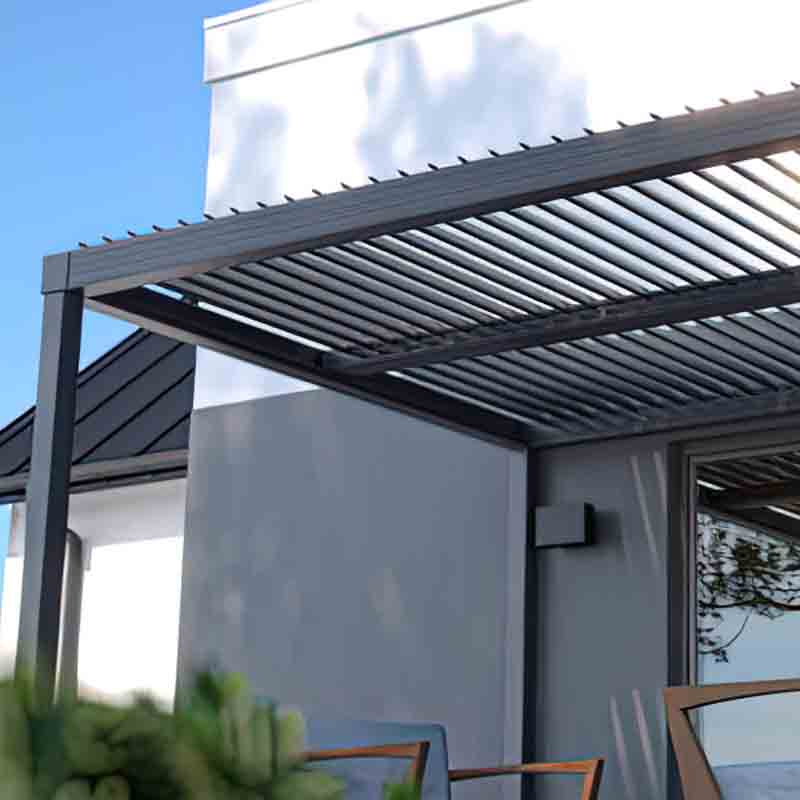Aluminum: The Green Building Material of Choice

1. Introduction
Begin by highlighting the growing global emphasis on sustainable building practices.
Emphasize the need for materials that can meet both environmental and functional requirements.
Outline the main content: exploring the eco-friendly attributes of aluminum; delving into the applications of aluminum profile, aluminium doors and windows, and curtain wall in architecture; analyzing how aluminum contributes to energy efficiency; discussing recycling and lifecycle aspects; and showcasing the role of aluinno in providing quality aluminum products for green building.
2. The Green Imperative in Construction
In today's world, the construction industry is under intense pressure to reduce its environmental footprint. Buildings account for a significant portion of energy consumption and carbon emissions. As a result, there is a relentless pursuit of materials and techniques that can create structures that are not only aesthetically pleasing but also environmentally friendly. This is where aluminum emerges as a front-runner.
| Year | Global Green Building Market Value ($ billion) | Aluminum Usage in Green Buildings (Tons) | Growth Rate of Aluminum in Green Buildings (%) | Key Application Areas in Green Buildings |
|---|---|---|---|---|
| 2020 | 300 | 2,000,000 | - | Facades, window frames, curtain walls |
| 2021 | 350 | 2,300,000 | 15 | Roofing systems, solar panel mounts, structural components |
| 2022 | 420 | 2,700,000 | 17.4 | Thermal insulation systems, ventilation ducts, skylights |
| 2023 | 500 | 3,200,000 | 18.5 | Greenhouse structures, facade shading devices, balcony railings |
| 2024 | 600 | 3,800,000 | 18.8 | Modular building units, rainwater harvesting systems, indoor partitions |
| 2025 | 720 | 4,500,000 | 18.4 | Building-integrated photovoltaics (BIPV) frames, pedestrian bridges, exterior trim |
3. Aluminum's Environmental Advantages
Aluminum is a remarkably sustainable material. Firstly, it is highly recyclable. Unlike many other building materials, aluminum can be recycled repeatedly without losing its essential properties. This means that old aluminum products, such as discarded window frames or building panels, can be melted down and transformed into new ones. Secondly, the production of aluminum has seen significant improvements in energy efficiency over the years. New smelting technologies require less energy, reducing the carbon emissions associated with its manufacture.
4. Applications of Aluminum Profile in Buildings
4.1 Structural Support: Aluminum profiles are widely used in providing the framework for various building elements. In modular construction, they offer flexibility and strength. For example, in the construction of temporary exhibition pavilions, aluminum profiles can be easily assembled and disassembled, allowing for quick setup and dismantling.
4.2 Interior Partitioning: Inside buildings, aluminum profiles are used to create partitions. They can be customized to different heights and widths, providing a sleek and modern look. In open-plan offices, aluminum partition profiles can define workspaces while allowing natural light to flow through.
5. Aluminium Doors and Windows: Aesthetic and Functional
5.1 Energy Efficiency: Aluminium doors and windows play a crucial role in regulating the indoor climate. They can be fitted with double or triple glazing, reducing heat transfer and thus minimizing the need for heating or cooling. In cold climates, well-insulated aluminum windows keep the warmth inside, while in hot regions, they keep the heat out.
5.2 Design Versatility: These doors and windows come in a vast array of styles and finishes. From sleek modern designs to more traditional ones, they can match any architectural aesthetic. In contemporary homes, large aluminum sliding doors can create a seamless connection between indoor and outdoor spaces.
6. The Allure of Curtain Wall Systems
6.1 Building Facade Transformation: Curtain wall systems made of aluminum offer architects an unlimited palette of design possibilities. They can be used to clad entire buildings, creating a striking visual impact. In skyscrapers, curtain walls not only enhance the appearance but also provide structural integrity.
6.2 Natural Light and Ventilation: These systems can incorporate operable sections, allowing for natural ventilation. They also maximize the entry of natural light, reducing the need for artificial lighting during the day. In office towers, curtain walls with integrated blinds can control sunlight penetration, improving occupant comfort.
7. Recycling and Lifecycle Considerations
The recyclability of aluminum means that at the end of a building's life, the aluminum components can be easily salvaged and reused. This reduces waste and the need for new raw materials. Additionally, the long lifespan of aluminum products, especially when properly maintained, further contributes to its environmental credentials.
8. Aluinno's Contribution to Green Building
Aluinno is dedicated to supplying top-quality aluminum materials for green building projects. Our range of aluminum profiles, aluminium doors and windows, and components for curtain wall systems are designed with sustainability in mind. We work closely with architects and builders to ensure that our products meet their exact requirements. Through continuous innovation and research, we are constantly improving the environmental performance of our aluminum offerings, helping to build a greener future.


 En
En



 Location:
Location:
















